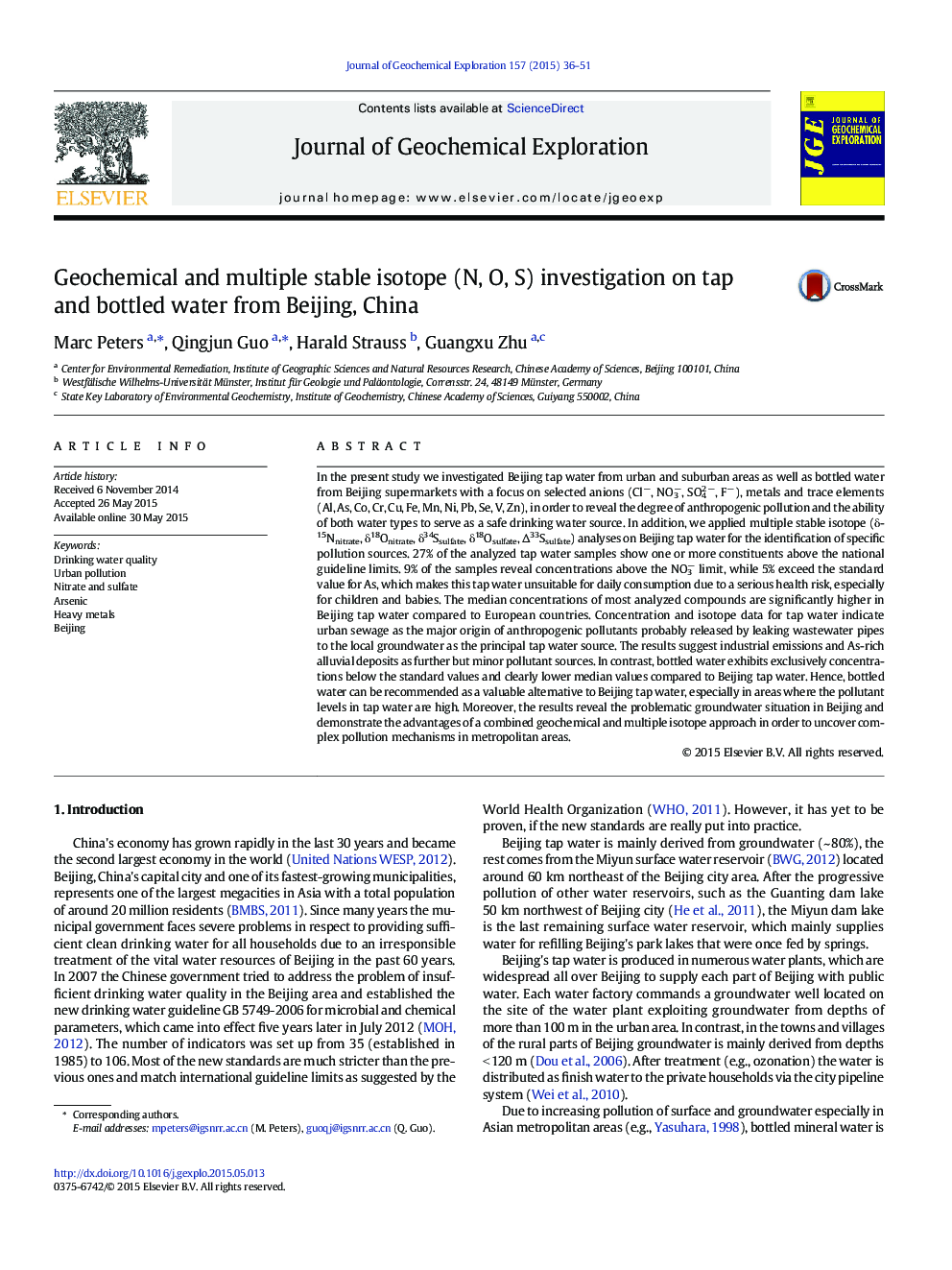| کد مقاله | کد نشریه | سال انتشار | مقاله انگلیسی | نسخه تمام متن |
|---|---|---|---|---|
| 4457078 | 1620902 | 2015 | 16 صفحه PDF | دانلود رایگان |

• 27% of the Beijing tap water does not comply with the national legislation.
• Compounds showing exceeded values are NO3−, As, F−, Fe, Mn and Zn.
• Urban wastewater major source for tap water contaminants
• Beijing groundwater highly affected by urban pollution
• Bottled water shows lower pollutant levels and matches national standards.
In the present study we investigated Beijing tap water from urban and suburban areas as well as bottled water from Beijing supermarkets with a focus on selected anions (Cl−, NO3−, SO42 −, F−), metals and trace elements (Al, As, Co, Cr, Cu, Fe, Mn, Ni, Pb, Se, V, Zn), in order to reveal the degree of anthropogenic pollution and the ability of both water types to serve as a safe drinking water source. In addition, we applied multiple stable isotope (δ15Nnitrate, δ18Onitrate, δ34Ssulfate, δ18Osulfate, Δ33Ssulfate) analyses on Beijing tap water for the identification of specific pollution sources. 27% of the analyzed tap water samples show one or more constituents above the national guideline limits. 9% of the samples reveal concentrations above the NO3− limit, while 5% exceed the standard value for As, which makes this tap water unsuitable for daily consumption due to a serious health risk, especially for children and babies. The median concentrations of most analyzed compounds are significantly higher in Beijing tap water compared to European countries. Concentration and isotope data for tap water indicate urban sewage as the major origin of anthropogenic pollutants probably released by leaking wastewater pipes to the local groundwater as the principal tap water source. The results suggest industrial emissions and As-rich alluvial deposits as further but minor pollutant sources. In contrast, bottled water exhibits exclusively concentrations below the standard values and clearly lower median values compared to Beijing tap water. Hence, bottled water can be recommended as a valuable alternative to Beijing tap water, especially in areas where the pollutant levels in tap water are high. Moreover, the results reveal the problematic groundwater situation in Beijing and demonstrate the advantages of a combined geochemical and multiple isotope approach in order to uncover complex pollution mechanisms in metropolitan areas.
Journal: Journal of Geochemical Exploration - Volume 157, October 2015, Pages 36–51